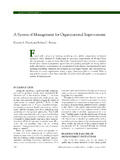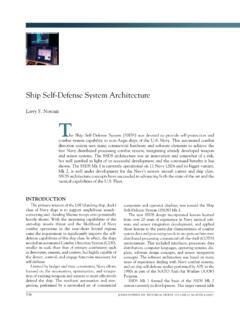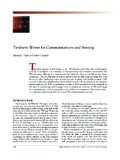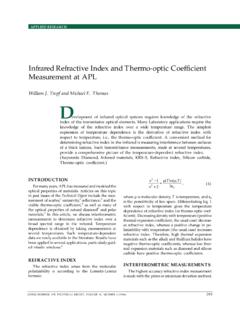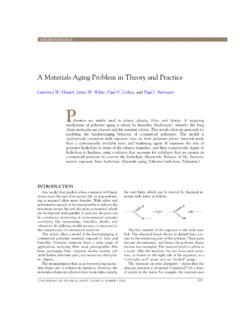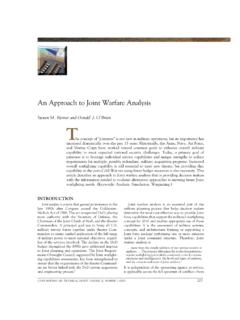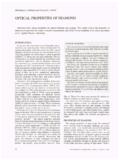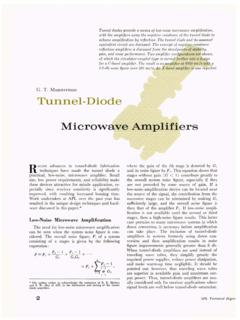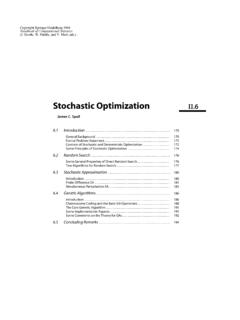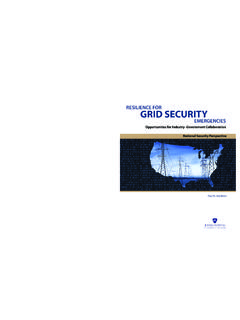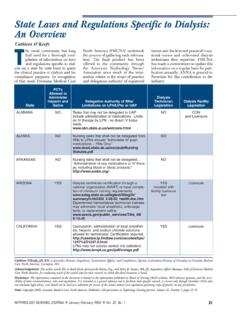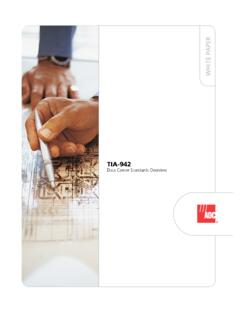Transcription of Overview of Missile Flight Control Systems - jhuapl.edu
1 JOHNS HOPKINS APL TECHNICAL DIGEST, VOLUME 29, NUMBER 1 (2010)9 Tthe guidance system. The types of steering commands vary depending on the phase of Flight and the type of interceptor. For example, in the boost phase the Flight Control system may be designed to force the Missile to track a desired Flight -path angle or attitude. In the midcourse and terminal phases the system may be designed to track acceleration commands to effect an intercept of the target. This article explores several aspects of the Missile Flight Control system, including its role in the overall Missile system, its subsystems, types of Flight Control Systems , design objectives, and design challenges. Also discussed are some of APL s contributions to the field, which have come primarily through our role as Technical Direction Agent on a variety of Navy Missile Flight Control system is a key element that allows the Missile to meet its system performance requirements.
2 The objective of the Flight Control system is to force the Missile to achieve the steering commands developed by INTRODUCTIONThe Missile Flight Control system is one element of the overall homing loop. Figure 1 is a simplified block diagram of the Missile homing loop configured for the terminal phase of Flight when the Missile is approaching intercept with the target. The Missile and target motion relative to inertial space can be combined mathemati-cally to obtain the relative motion between the Missile and the target. The terminal sensor, typically an RF or IR seeker, measures the angle between an inertial refer-ence and the Missile -to-target line-of-sight (LOS) vector, which is called the LOS angle.
3 The state estimator, , a Kalman filter, uses LOS angle measurements to estimate LOS angle rate and perhaps other quantities such as target acceleration. The state estimates feed a guidance law that develops the Flight Control commands required to intercept the target. The Flight Control system forces the Missile to track the guidance commands, resulting in the achieved Missile motion. The achieved Missile motion alters the relative geometry, which then is sensed and used to determine the next set of Flight Control Overview of Missile Flight Control SystemsPaul B. JacksonP. B. JACKSONJOHNS HOPKINS APL TECHNICAL DIGEST, VOLUME 29, NUMBER 1 (2010)10commands, and so on. This loop continues to operate until the Missile intercepts the the parlance of feedback Control , the homing loop is a feedback Control system that regulates the LOS angle rate to zero.
4 As such, the overall stability and performance of this Control system are determined by the dynamics of each element in the loop. Conse-quently, the Flight Control system cannot be designed in a vacuum. Instead, it must be designed in concert with the other elements to meet overall homing-loop perfor-mance requirements in the presence of target maneu-vers and other disturbances in the system, , terminal sensor noise (not shown in Fig. 1), which can negatively impact Missile remainder of this article is divided into six sec-tions. The first section discusses the specific elements of the Flight Control system. Particular emphasis is placed on understanding the dynamics of the Missile and how they affect the Flight Control system designer.
5 The next three sections describe different types of Flight Control Systems , objectives to be considered in their design, and a brief design example. The last two sections discuss some of the challenges that need to be addressed in the future and APL s contributions to Navy Systems and the field in Control SYSTEM ELEMENTSAs noted above, the Flight Control system is one ele-ment of the overall homing loop. Figure 2 shows the basic elements of the Flight Control system, which itself is another feedback Control loop within the overall homing loop depicted in Fig. 1. An inertial measurement unit (IMU) measures the Missile translational accelera-tion and angular velocity. The outputs of the IMU are combined with the guidance commands in the autopi-lot to compute the commanded Control input, such as a desired tail-surface deflection or thrust-vector angle.
6 An actuator, usually an electromechanical system, forces the physical Control input to follow the commanded Control input. The airframe dynamics respond to the Control input. The basic objective of the Flight Control system is to force the achieved Missile dynamics to track the guidance commands in a well-controlled manner. The figures of merit (FOMs) used to assess how well the Flight Control system works are discussed in Flight Control System Design Objectives. This section provides an Overview of each element of the Flight Control InputsThe inputs to the Flight Control system are outputs from the guidance law that need to be followed to ulti-mately effect a target intercept. The specific form of the Flight Control system inputs (acceleration commands, attitude commands, etc.)
7 Depends on the specific appli-cation (discussed later). In general, the Flight Control system must be designed based on the expected charac-teristics of the commands, which are determined by the other elements of the homing loop and overall system requirements. Characteristics of concern can be static, dynamic, or both. An example of a static characteris-tic is the maximum input that the Flight Control system is expected to be able to track. For instance, a typical rule of thumb for intercepting a target that has constant acceleration perpendicular to the LOS is for the Missile to have a 3:1 acceleration advantage over the target. If the Missile system is expected to intercept a 10-g accel-erating threat, then the Flight Control system should be able to force the Missile to maintain a 30-g acceleration.
8 An example of a dynamic characteristic is the expected frequency content of the command. For instance, rapid changes in the command are expected as the Missile approaches intercept against a maneuvering threat, but the input commands may change more slowly during TargetdynamicsRelativegeometryStateestim atorTerminalsensorGuidancelawFlight controlsystemFigure 1. The Flight Control system is one element in the Missile homing loop. The inertial Missile motion controlled by the Flight Control system combines with the target motion to form the rela-tive geometry between the Missile and target. The terminal sensor measures the Missile -to-target LOS angle. The state estimator forms an estimate of the LOS angle rate, which in turn is input to the guidance law.
9 The output of the guidance law is the steering command, typically a translational acceleration. The Flight Control system uses the Missile Control effectors, such as aerodynamic tail surfaces, to force the Missile to track steering commands to achieve a target 2. The four basic elements of the Flight Control system are shown in the gray box. The IMU senses the inertial motion of the Missile . Its outputs and the inputs from the guidance law are com-bined in the autopilot to form a command input to the Control effector, such as the commanded deflection angle to an aerody-namic Control surface. The actuator turns the autopilot command into the physical motion of the Control effector, which in turn influences the airframe dynamics to track the guidance Flight Control SYSTEMSJOHNS HOPKINS APL TECHNICAL DIGEST, VOLUME 29, NUMBER 1 (2010)11 the midcourse phase of Flight where the objective is to keep the Missile on an approximate collision path or to minimize energy loss.
10 Other dynamic characteristics of concern include the guidance command update rate and the amount of terminal sensor noise flowing into the Flight Control system and causing unnecessary con-trol actuator DynamicsRecall that the objective of the Flight Control system is to force the Missile dynamics to track the input com-mand. The dynamics of the airframe are governed by fundamental equations of motion, with their specific characteristics determined by the Missile aerodynamic response, propulsion, and mass properties. Assuming that Missile motion is restricted to the vertical plane (typical for early concept development), the equations of motion that govern the Missile dynamics can be devel-oped in straightforward the diagram in Fig.
